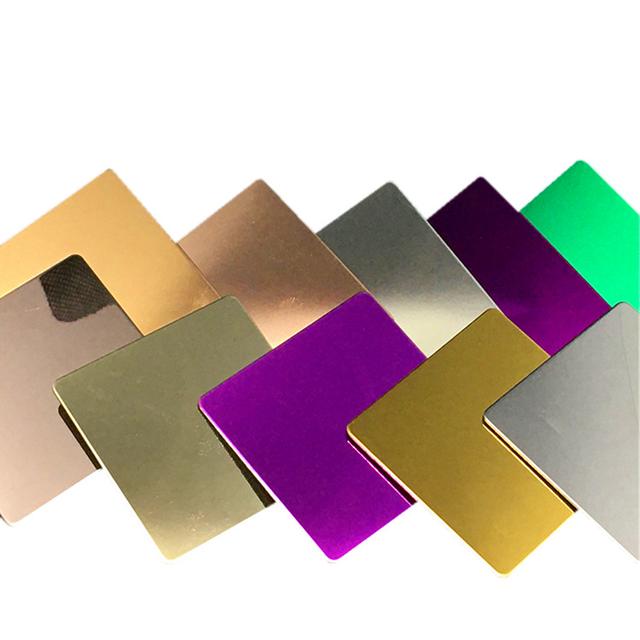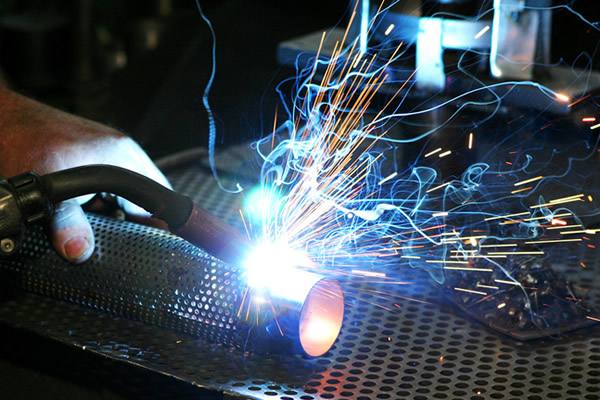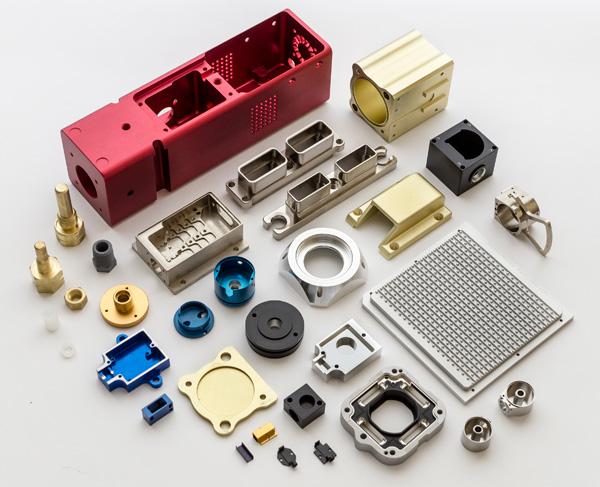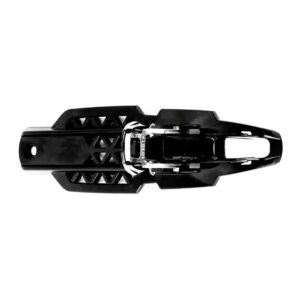Metal Parts Manufacturing – A Guide To Make Custom Metal Parts
Sheet Metal Fabrication is an essential step in the manufacturing process. It would be best if you considered many factors when choosing materials, processes, and finishing options. The choice must be suited to your end goals and needs. This guide is designed to help you make the appropriate decisions to create the parts.
Material Used For Our Metal Parts Manufacturing
Choosing a suitable material for your project is an important step in the design process. There are many factors to consider when choosing a material including cost, strength, ease of working, availability, and suitability for the application.
The sheet metal industry is a large and growing market. There are many different types of sheet metal available, including aluminum, steel, stainless steel, copper, brass, titanium, and others.
1. Steel
Steel is a versatile material that is often used in construction because of its strength-to-weight ratios. It is also malleable enough to bend around corners and curves, making it perfect for framing walls and roofs. Steel is durable and will last through years of heavy use. It is also easy to weld, making it ideal for fabricating large structures.
Hot-rolled steel
Hot-rolled steels are made by heating metal to high temperatures over 1700°F and then rolling it down into sheets. These sheets are then cut into specific shapes and sizes. Hot rolled steel is often used for making structural components like beams, columns, and girders. It’s also used in many other industries including automotive, construction, aerospace, and shipbuilding.
Q235 and Q345 hot rolled steels offer excellent formability and weldability. They are used for structural applications and for parts for a variety of industry sectors. Q345 offers better resistance to corrosion and better strength at lower temperatures.
Cold-rolled steel
Cold-rolled steel is a type of cold-rolled steel that has undergone an extra rolling process at room temperature, resulting in a stronger product. CRS is often used for automotive parts and construction projects. It can also be used for galvanizing.
SAPH440 is one type of cold-rolled steel used for automotive parts and other industrial applications. It has excellent tensile strength making it an ideal material for structural purposes.
Spring Steel
Spring steel is a type of metal that returns to its original shape after bending or twisting. Spring steel is made from different alloys depending on what properties you need. Common types of spring steel include low-alloy manganese, medium-carbon, and high-carbon. Low-alloy manganese is commonly used for smaller springs because it is less expensive than other alloys. Medium-carbon steel is often used for larger springs because it is easier to bend and form. High-carbon steel is used for very strong springs because it is harder and stronger than other alloys.
65Mg is a common alloy that contains 65% Manganese. It has good hardness and wears resistance. It also has good workability.
Cold Galvanized Steel
Galvanized steel is an important metal because it provides mechanical strength and corrosion resistance. It is often used for structural components like beams, columns, girders, and trusses. Galvanized steel also provides electrical insulation properties. It is commonly used for roofing, fencing, and decking.
SGCC is alloyed steel that can have either a pure zinc coating or a Zn/Fe coating. It is commonly used in construction because it is strong enough to withstand heavy loads and is corrosion-resistant.
2. Stainless Steel

Stainless steel is a type of metal alloy that contains at least 10.5% chromium. Stainless steel is often used because it doesn’t rust easily, making it ideal for kitchenware and other items that come in contact with food. Stainless steel also resists corrosion, meaning you won’t need to worry about your sink or stove corroding away.
There are several different grades of stainless steel, each with its own properties. 300 series stainless steel is the most common grade and offers excellent corrosion resistance, formability, and weldability. 304 and 316 grades are also commonly used and offer similar properties. There are other grades available, including martensitic, duplex, and super duplex stainless steel. These offer different properties, such as higher strength, lower ductility, and greater hardness.
3. Aluminum
Aluminum is a very versatile material. It is strong, lightweight, and durable. It is also an excellent conductor of heat and electricity. It is non-toxic and does not rust. It is also relatively inexpensive. It is commonly used in many products including cans, beverage containers, cookware, utensils, appliances, and electronics. It is also used in construction, automotive, aerospace, and sporting goods.
AL 1060 is a wrought alloy that is used in many industrial applications including in electrical and chemical industries. It is a strong material with high electrical conductivity and corrosion resistance. It is also easy to form and weld. AL 6063 is mostly used for architectural applications or for trimming. It has higher tensile properties and offers better surface finishes. It also offers high resistance to corrosion and is a good choice for anodizing. AL 6061 is a highly flexible heat-treated alloy with excellent workability and offers good corrosion resistance. It is well suited to most processes and has good saltwater corrosion resistance. AL 5052 is the strongest non-heat-treated alloy and offers very good strength and fatigue resistance. It is very workable and can be formed into complex parts.
4. Copper
Copper is a soft, ductile, nonmagnetic, and highly conductive material. Copper is also resistant to corrosion and tarnishing. It is malleable and easy to shape. Copper is often used in plumbing, wiring, bathroom fixtures, and other mechanical components. It is also used in electronics, aerospace, automotive, and many other industries.
5. Brass
Brass has a lower melting point than copper, so it’s cheaper to produce and easier to shape. Brass also conducts heat well, which means it’s great for electrical components like car ignition coils and heating elements. It’s also resistant to electricity, so it’s perfect for electronics that need to withstand sparks and static electricity.
6. Titanium
Titanium is an extremely hard metal that is resistant to corrosion. It is also very lightweight. Titanium alloys are used in medical implants because they are non-magnetic, non-reactive, and bio-compatible. They are also used in aircraft, space vehicles, and other high-performance vehicles.
Every material has its own unique properties. These properties determine what kind of application it will be best suited for. You need to think about what you want your product to be before choosing the right material.
Some of the factors that you should consider when making your choice of materials

Processes To Make Custom Metal Parts
Metal fabrication involves many different processes. Each method has its own strengths, compatibility, and trade-offs, making each suitable for certain purposes. Understanding the differences between these methods will help you choose the best option for your needs.
1. CNC Machining
How CNC Machining Works
CNC machining is a type of manufacturing technology that allows you to cut metal parts using a computer-controlled milling machine. The cutting tool moves along a path determined by the software program. As the cutting tool passes through the material, it removes small amounts of material at each pass until the desired shape is achieved.
CNC machining is also referred to as Computer Numerically Controlled (CNC) milling, turning, drilling, grinding, routing, laser cutting, water jet cutting, plasma cutting, wire EDM, and other similar terms.
CNC Machining Use Cases and Industries
CNC machines are great at making small quantities of items quickly and efficiently. They are also very versatile, allowing you to create many different shapes and sizes. CNC machines are often used for rapid prototyping and mass production. Lathes are similar, although they tend to be less accurate and more expensive. Parts made with lathes usually require setup time, while parts made with CNC machines are generally easier to set up.
CNC machining is used in many industries including aerospace and defense, automotive, consumer products, electronics, industrial, medical and dental robotics.
Visit our CNC Machining Service for more information.

2. Extrusion
How Extrusion Works
Extruding metal is an industrial manufacturing process that produces solid shapes out of molten material. Extrusion is often used to create tubes, pipes, and other shapes. It’s also used to produce custom products like jewelry, toys, and medical devices. The process begins with a die, which is a tool that creates the final shape of the product. The die is then placed inside a pressurized chamber filled with molten metal. As the pressure increases, the molten metal flows through the die and cools to create the desired shape. After cooling, the part is removed from the die and finished using additional processes.
Extrusion profiles can be almost anything with a continuous cross-section. For example, you could create a frame for your window using extruded aluminum tubing. You could also create a tube that is hollow, like a square, round, or even hexagonal tube. When manufacturing an extrusion profile, manufacturers determine its form when creating it.
There are three main types of extrusion: hot extrusion, cold extrusions, and friction extrusion. Hot extrusion involves using heat to keep the material soft. Cold extrusion involves keeping the temperature low enough to prevent the material from hardening. Friction extrusion involves pushing the material through the die with pressure.
Extrusion Use Cases and Industries
Extrusion is an important manufacturing process. It is used to create structural parts like frames, windows, doors, etc. in the automotive industry. Extrusion is also used in other industries including aerospace, construction, packaging, and medical devices.

3. Die Casting
How Die Casting Works
Die casting uses steel molds to create intricate shapes out of molten metal. Low melting point metals like aluminum and zinc are used to fill the mold. Once cooled, the castings are removed from the molds and finished. Die casting is an efficient manufacturing method because it allows engineers to produce large numbers of identical parts at once.
Die casting is done by forcing the molten metal through a small opening called a sprue. The molten metal then flows into a cavity formed by two dies. Once the metal cools, the dies are removed and the finished product emerges. Die casting is often used to create intricate designs.
Die Casting Use Cases and Industries
Die castings are durable and versatile. They are strong, heat resistant, and easy to paint. They also feature smooth surfaces. Die casting favors large volume production, which typically can compete with CNC and investment casting, but not injection molding. This supports a wide variety of paints, plating, and finishes. Still, it is ideal for use with heavy-duty equipment where strength is essential, like automotive components.
4. Forging
How Forging Works
Forging is the process of making something out of metal by applying heat and pressure. It is a very old technique, dating back thousands of years. Forgers use tools like hammers and tongs to shape metal. Modern forges are automated and use electric furnaces to apply heat and pressure.
Forging is an ancient art form that has been around since the time of the Romans. Today, modern forging uses high-impact machinery to shape metal into desired forms. Forging produces less material waste than other methods, making it more cost-effective for practical applications.
Die Forging Use Cases and Industries
Forging can be classified into three categories.
Small forgings include nuts and bolts, screws, and other fasteners.
Medium forgings include connecting rod, crankshaft, lever, hook, axle, flange coupling, etc.
Heavy forgings include large shafting of power plant generators, turbines, and ships, as well as a column of press and roll for the rolling mill.
5. Sheet Metal fabrication
How Sheet Metal Fabrication Works
Sheet Metal Fabrication is the process of creating sheet metal parts. It involves cutting, bending, welding, and finishing. Cutting is the first step in fabricating sheet metal. It is usually performed using a cutting machine, laser cutter, water jet cutter, plasma cutter, or another similar device. Bending is the next step. It is often done using a press brake, punch press, shear, or other similar devices. Welding is the last step in fabricating sheet materials. It is usually done by manually welding pieces together. Finishing is the final step in making sheet metal parts. It is usually done manually by painting, powder coating, plating, anodizing, or other similar processes.
Sheet metal stamping is a sub-division of Sheet Metal Fabrication. It is also a cost-effective option compared to other manufacturing processes. Stamping is a form of manufacturing that involves pressing an object out of a piece of material using a punch. Stamping is often done using a press, which is a device that applies pressure to a piece of metal to shape it. A stamping press consists of two parts: a bedplate and a ram. The bedplate is the base of the press and holds the metal pieces while the ram pushes them down onto the bedplate. The ram is attached to a hydraulic cylinder, which is connected to a foot pedal. When the user presses the foot pedal, the ram moves downward and compresses the metal. As the metal is compressed, it becomes thinner and takes on the shape of the tool. After the metal is shaped, the press releases the metal back into its original state.
Sheet Metal Fabrication Use Cases and Industries
Sheet Metal Fabrication is a versatile process that is used in many different industries including aerospace, automotive, construction, and furniture. Sheet metal fabrication is often cheaper than other processes like 3D printing. From aircraft parts to car bumpers, sheet metal fabrication is a cost-effective method of production.

6. Metal 3D Printing
How Metal 3D Printing Works
Metal 3D printing is an additive manufacturing technology that creates three-dimensional objects through layers of material. Metal 3D printing services use precision lasers to create metal parts, including prototypes and small volume production runs. It is ideal for experimenting and prototyping, but not as scalable as other metal processes like CNC machining. That’s what makes it great for creating prototypes, as well as substituting for low-volume casting operations.
3D Printing is a method of creating three-dimensional objects by adding material layer by layer. It is done by melting a thin layer of plastic or metal onto a surface and then laying down another layer until the object is complete. The technology is often referred to as additive manufacturing because layers are added one at a time. A typical printer consists of a platform that moves along X, Y, and Z axes. The platform holds a vat of liquid resin that hardens when heated. As the platform moves along the X axis, the vat is lowered and the platform rises. When the platform reaches its highest point, the vat is emptied and the platform lowers again. This process repeats itself until the desired shape is completed.
Metal 3D Printing Use Cases and Industries
3D printing is an additive manufacturing technique that creates three-dimensional objects directly from a digital file. The technology allows engineers to produce prototypes and small quantities of parts quickly and inexpensively. Metal 3D printing is especially useful for prototyping because it can create complex shapes with high precision and accuracy. 3D printing also allows engineers to test designs before investing in expensive tooling.
Surface Finish Options
Metals can be polished, etched, plated, anodized, painted, coated, or otherwise treated to create a specific finish. Depending on your application, you may need to consider what type of metal you’re using and whether or not it needs any special treatment. You should also consider the cost of finishing options when choosing a material.

1. Powder coating
Powder coatings are a type of paint that is applied in a dry form instead of a liquid form. These paints are usually made of metal particles suspended in an organic binder. When sprayed onto a surface, the particles bind together forming a solid layer. The binder also helps to prevent the particles from settling out of suspension. Powder coatings are applied using electrostatic spray guns. Once the gun is charged, the particles will adhere to the surface because of static electricity. After spraying, the powder is heated to cure the paint. Powder coatings are commonly used for automotive parts, appliances, furniture, and other industrial products.
2. E-Coating
E-coating (Electrophoretic painting) is a method of applying coatings to metals. It involves using an electrical charge to move charged particles through a liquid medium. These particles then adhere to the surface of the metal. The application of heat cures the paint. Electrophoretic painting is often used as a primer before other finishes like lacquer or enamel. It is also used on its own to protect the metal from rusting. It is commonly used on hot rolled steel, cold rolled steel, and spring steel.
3. Zinc Plating
Zinc plating is a chemical method that applies a thin layer of zinc to a substrate. The result is a protective coating that provides both a physical barrier and a sacrificial anode. The zinc coating protects the metal from corrosion. Zinc plating is used to protect steel products against corrosion. It is also used to create decorative finishes.
4. PVD Coating
PVD coatings are an important class of materials that are widely used in industry. PVD coatings are deposited onto substrates using physical vapor deposition techniques. These techniques involve heating a substrate to high temperatures, then introducing a gas containing the material to be deposited. The gas condenses on the hot surface and forms a thin film of the desired material.
5. Anodizing
Anodizing is a method used to protect aluminum alloys from corrosion. Aluminum itself is very corrosion resistant but not all metals used in its alloy are. The anodization process submerges the material into a chemical bath that forms an aluminum oxide coating on the surface of the material. Anodizing is commonly used for aluminum alloys used for marine or salt water environments to prevent corrosion. Hardness is improved by increasing the thickness of the oxide layer.
6. Passivation
Passivation is a method of reducing the natural chemical reactivity (corrosion) of metals. For example, when stainless steel is exposed to air, oxygen reacts with the iron atoms at the surface of the metal forming iron oxide (rust), which weakens the metal. To prevent this reaction, the surface of the metal is treated with a passivating agent, usually nitric acid. Passivation may also be required during manufacturing processes, such as welding or heat treatment.
7. Dacron
Dacron is a brand name for polyester fiber made by DuPont. It is a synthetic fiber that is resistant to chemicals and abrasion. It is commonly used in clothing, carpets, and other textiles. It is often blended with cotton fibers to create fabrics that resist stains and wear well.




